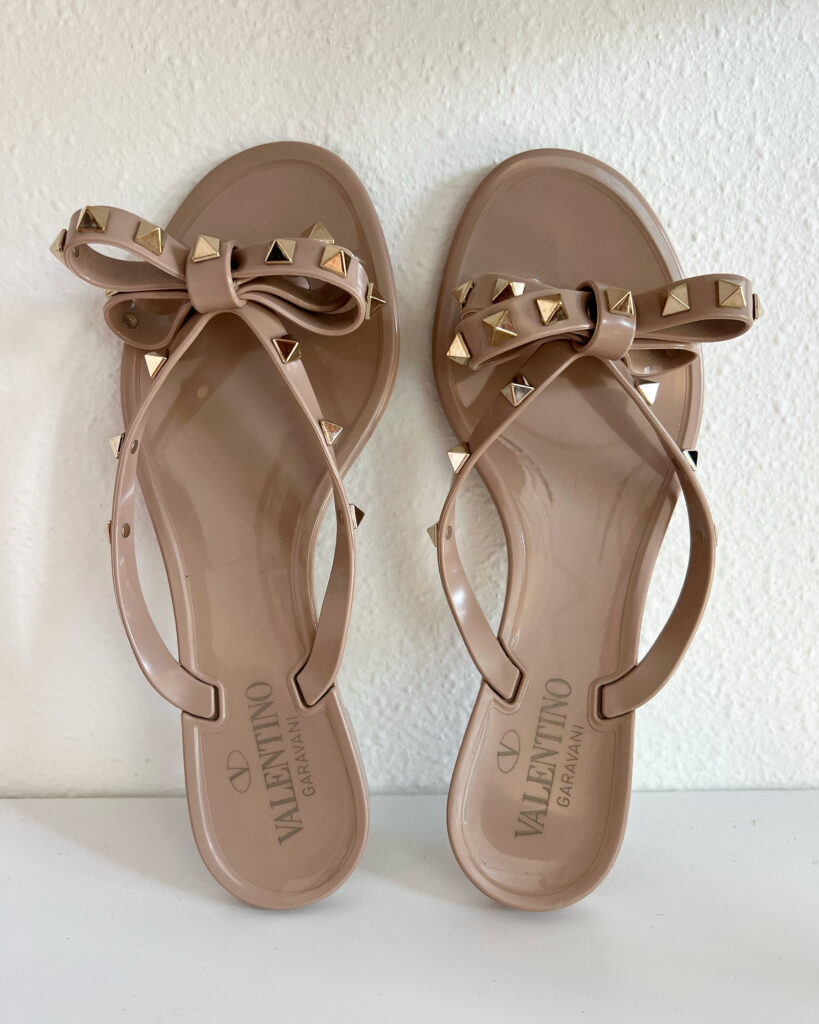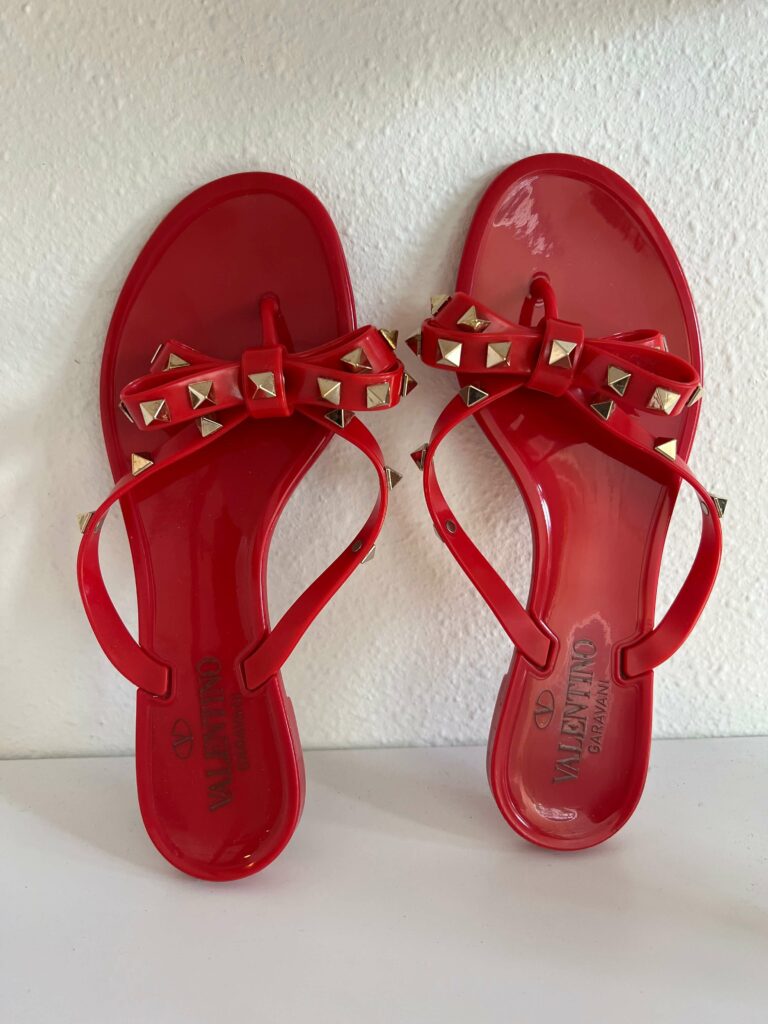A short history of jelly sandals….
Above: Images by Meduses.
Jellies, an all-plastic, fisherman-style sandal available in clear plastic or a kaleidoscope of colors, took American fashion by storm in the ’80s and ’90s. And if you’ve looked on runways, beaches, and shops in the last few years you may have noticed… jellies are back!
Although there are two accounts of the origins of these popular shoes, the timeline is more or less the same. The story begins in the 1940s with the invention of PVC plastic. Designers and creatives across industries began looking for potential applications for this revolutionary material that, by the 50s, was used for everything from shower curtains to furniture and beyond.
One version says the shoes were invented in Maine-en-Loire, France in 1946, an affordable footwear option in a country still recovering from wartime shortages of materials like leather. The shoes were made of a single piece of plastic, injected into a mold and then allowed to cool, and were designed in the style of the classic fisherman’s sandal (normally made in leather). Another says the shoes were popularized by Grendene shoe company in Brazil in the 1970s.
Whichever version you believe, the impact the shoes had on the fashion world is indisputable. Marketed to women and girls as being light, affordable alternatives to leather shoes, that, conveniently, were easy to clean, plastic fisherman sandals were ubiquitous in the 1980s from Australia, Europe, and South America to the United States. It didn’t take long for a slide version of the sandal to appear alongside the one with the ankle strap, soon followed by all-plastic flat shoes with closed toes.
Although their popularity has since waxed and waned, in the last few years they seem to be back with a bang, having even appeared on the runway at Milan fashion week, worn in the Alberta Ferretti show in 2017 by Bella & Gigi Hadid.
Below- Jelly & plastic sandals by Valentino, Gucci, Ferragamo and Chanel. Top row: SOLD. Bottom row: Chanel & Valentino,





